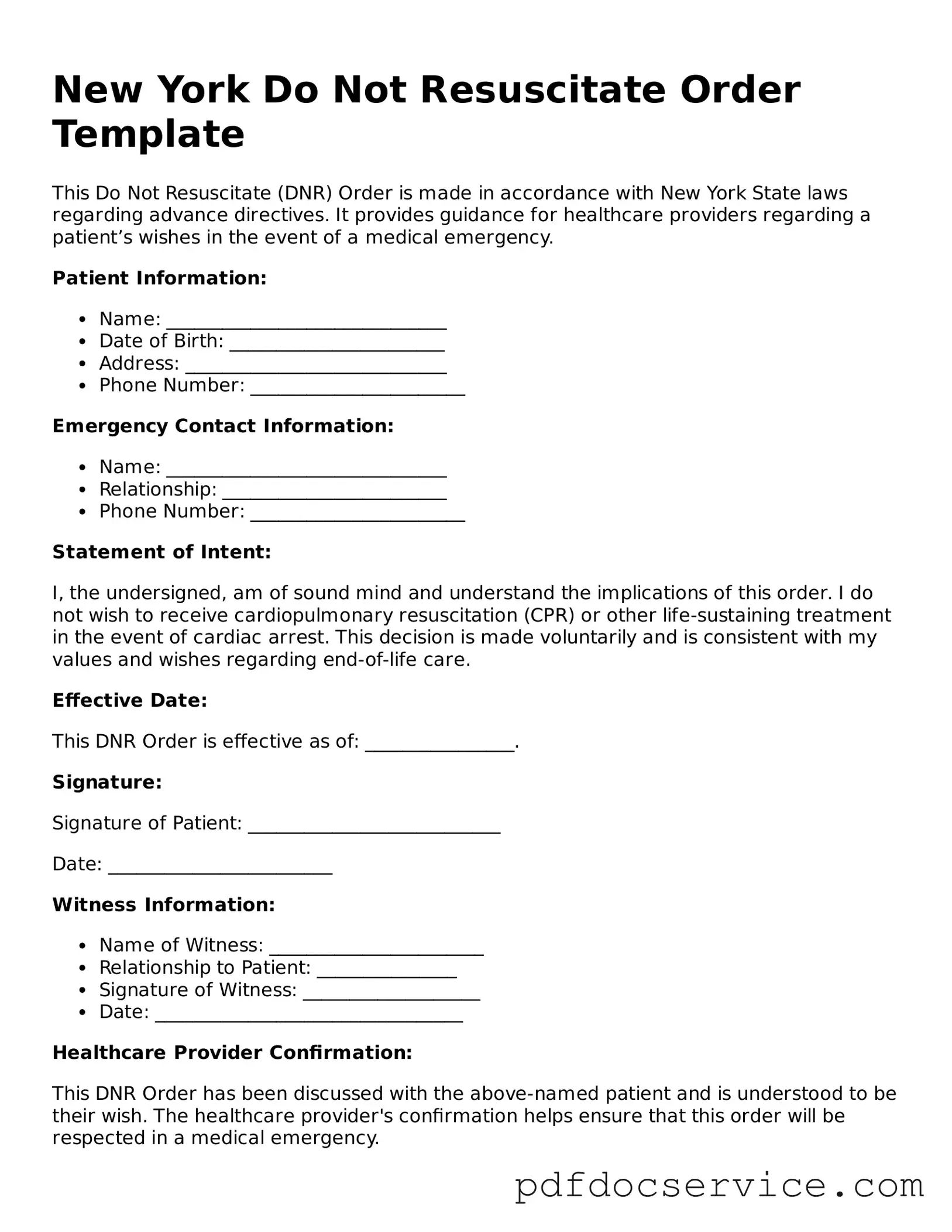Printable Do Not Resuscitate Order Template for New York
A New York Do Not Resuscitate Order (DNR) form is a legal document that allows individuals to express their wishes regarding medical treatment in the event of a cardiac or respiratory arrest. By completing this form, patients can communicate their desire not to receive cardiopulmonary resuscitation (CPR) or other life-saving measures. Understanding the implications of a DNR is essential for ensuring that personal healthcare preferences are respected during critical moments.
Open Do Not Resuscitate Order Editor
